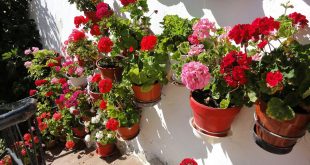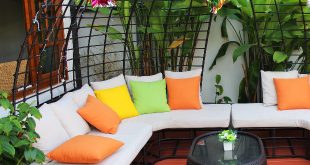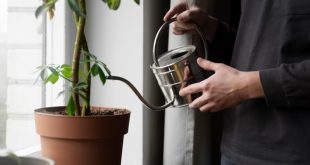Most gardeners dread the start of fall. It signals that the end of the gardening season is coming soon. After several months of eating your delicious fresh vegetables right after picking them, it is difficult to give that freshness up. Canning and freezing gives you and your family the best-preserved food possible, but will never be the same as fresh vegetables from the garden.
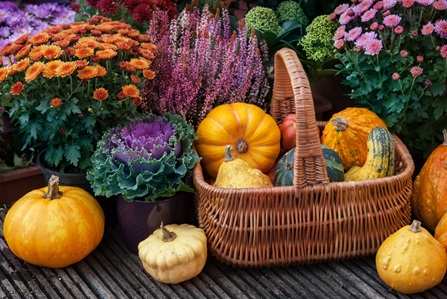
Nika Art/Shutterstock.com
Obviously, we can’t stop winter. However, we can extend the planting and growing season. Use garden supplies like protective coverings so you are prepared for the colder temperatures. When choosing seeds, select varieties that have the greatest cold tolerance. Part of extending the season is going to mean you plant more. Make sure you have enough seeds to plant a second harvest of each vegetable.
10 Methods and Techniques to Extend the Growing Season
With some careful planning and thoughtful seed choices, you can be harvesting fresh vegetables for some weeks after the first frost. Here are 10 methods to help extend your growing season:
1.Maintain a No Empty Space Policy.
You only have a limited amount of space in your garden. Make sure you are using all of it — all the time. Start with a No Empty Space philosophy. Every time a plant is used up, harvested or dies, replace it with something else. Get the maximum benefit from every square inch throughout the growing season.
2.Raise Your Beds.
Consider converting your garden to raised beds. A raised bed will warm up sooner in the spring and stay warmer in the fall. Because the soil is never compacted by walking on it or running heavy equipment over it, the soil is loose and allows the root to penetrate more quickly.
That means plants mature more quickly and can be harvested. The soil will have fewer weeds. The raised beds are also easier to cover when cold temperatures threaten.
3.Use a Windowsill Garden.
Before the first freeze, bring in a pot of herbs from your garden. If you pot up a division of mint, chives, sage and parsley, they should provide you with fresh herbs throughout the winter. Then, you can replant them in your garden in the spring.
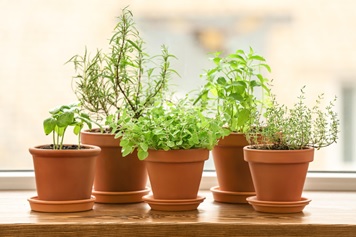
Pixel-Shot/Shutterstock.com
You can grow some vegetables indoors as well. Lettuce is a good choice, along with root crops like carrots and beets, which can tolerate lower light levels.
4.Eliminate the Weeds.
Keeping the weeds pulled will minimize the competition your plants have for water and nutrients. This allows them to grow more quickly to harvest. Your garden supplies should include quality tools to make the job of weeding more effective and efficient for your type of garden.
5.Apply Careful Watering.
Careful watering means don’t overwater as well as watering enough to supplement the rainfall you do receive. More areas of the country are experiencing unusual weather patterns. Large areas are suffering with extended drought, while others are having too much rain.
It is more important than ever to have good garden watering tools. This includes a water irrigation system that can be set with a timer to water for specific amounts and intervals of time.
6.Use Successive Planting.
What successive planting means is that you plant several plantings of the same crop, or you follow one crop with a different crop. If you want to have fresh salad greens throughout the growing season, plant lettuce every two weeks.
When the cauliflower you planted in the spring is harvested, follow it with bush beans planted directly in the ground. Start cauliflower and broccoli seeds in the middle of summer and transplant the seedlings in the garden for a fall harvest. Most brassicas are tolerant of some frost and will become sweeter if harvested after a frost.
7.Take Advantage of a Cold Frame.
A cold frame will allow you to start plants outdoors earlier in the spring, but also extend the growing season in the fall. A cold frame is a bottomless box with glass on the top. An old window is ideal for the top. Make the length of the four sides to fit the dimensions of the window. The wall facing the sun should be lower than its opposite wall. The two sides will be angled.
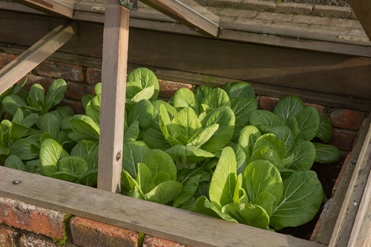
Peter Turner Photography/Shutterstock.com
A cold frame is, in effect, a mini greenhouse. You can place any potted plants in the cold frame or plant directly in the soil. Choose vegetables that are somewhat cold-tolerant already to make the best use of your cold frame.
8.Watch the Weather.
Keep an eagle eye on the temperature as the growing season moves into the fall months. It is not unusual for a night of early frost warnings to be followed by a couple of weeks of summer temperatures. Don’t let one night destroy your fall garden.
Also, if your garden watering tools don’t include a good rain gauge, get one. Not only will it give you an accurate measurement of how much rain your garden received, but it is a good way to determine if you are watering your garden enough or too much.
9.Use a Frost Cloth.
Frost cloth is made of polypropylene or polyester and is used to cover plants to protect them from the cold. The cloth can be draped over hoops or just directly on the plants. Frost cloths will hold in the heat, while still allowing the rain to pass through to the plants.
These cloths will also protect the plants by acting as a barrier to insect pests, and they can be used as a shade to protect your plants from the sun in the heat of summer. If you don’t have frost cloth, you can cover your plants with an old sheet.
10.Mulch Your Garden.
Hopefully, you already use mulch in your garden to help stabilize the soil temperature. In the fall, increase the mulch to 12 inches or more over your root crops. The thick layer of mulch will keep the ground from freezing even when the outdoor temperature drops well below freezing. This technique will allow you to harvest fresh carrots and beets well after the first freeze.
Using some or all these methods and techniques will help you to extend your garden’s growing season by weeks or even months.
 World inside pictures Collect and share the best ideas that make our life easier
World inside pictures Collect and share the best ideas that make our life easier

